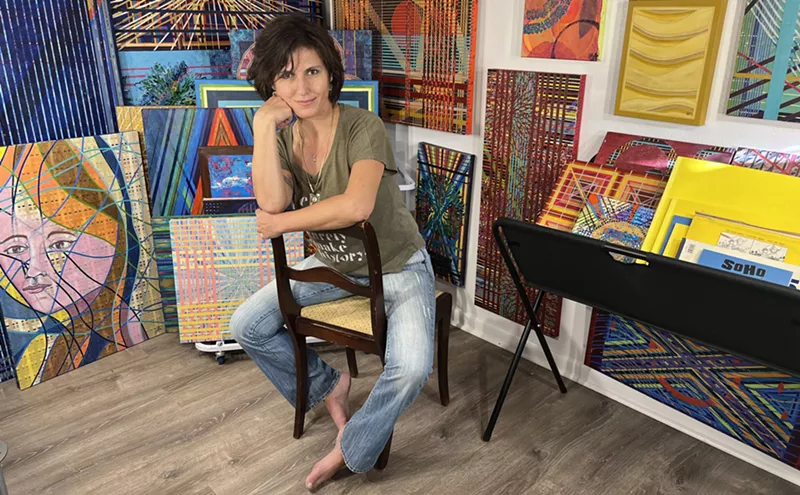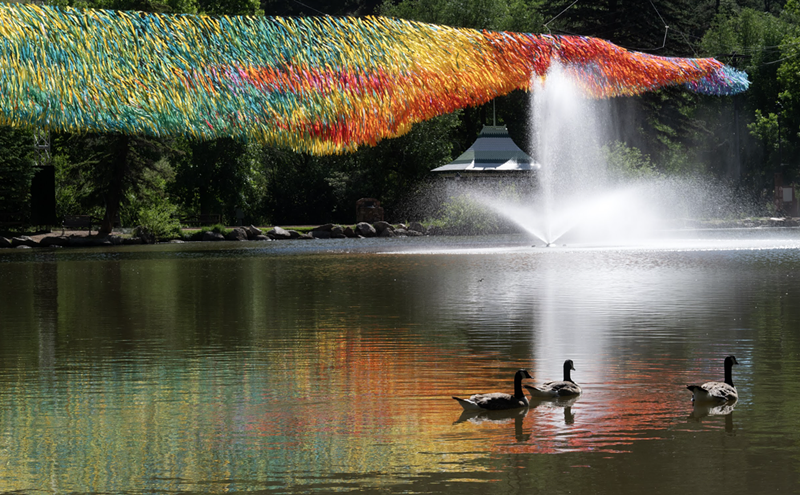"I hate to sound so mystical, but it's kind of like the creator just dropped this stuff in front of me," Simbala says. And that's just how you'll feel walking into Slaveship, an otherworldly space where wooden masks stare out from the walls and beads of brass or cow bone jangle and the sweet odors of oils and incense hover. Just now settling into a larger location near the intersection of Marion Street and Park Avenue, the golden-eyed retailer still sells her jewelry and artifacts to a loyal following, but it's often the little mainstays that keep the shop afloat -- the candles, perfumed oils and what she dubs "airport art": functional tabletop items such as ebony pens or patterned cow-bone salad tossers.
That doesn't mean there are no pieces with stories to tell -- in fact, they abound. Some of Simbala's favorites include circle-of-elders sculptures from Kenya and thirty- to forty-year-old Dan tribal ceremonial masks from the Ivory Coast. Called passport masks and decorated with cowry shells or medicine patches, they function almost like European crests, identifying clans within the tribe. And there are bangles and black-and-white lengths of mud cloth and long strands of trade beads and brittle fish vertebrae for sale as well, all symbols of a different way of life.
"I enjoy the mystery of African art," Simbala says. "Something about it allows people to create their own spirituality through the mystery of not understanding exactly what everything means -- it's so complex and so mystical. People are actually afraid of it because they don't understand it. Because African spirituality is an oral tradition, people sometimes wonder what validity it has. And our art is the symbol of that validity: Every mask was created in the tradition of the original people who wore it as an expression of how they felt about their spirituality."
On the other hand, she notes, some of the sculptures, especially the over-endowed ones that celebrate fertility and masculinity, elicit downright hilarious reactions from people off the street: "People just stare at them like, Wow!" But, she adds, "It breaks the ice. I'll tell them where it's from and what it's used for and what tribe made it. I get involved in what I'm selling -- it's not like a can of pop to me. I guess it's not the greatest way to be a salesperson, but I feel like I contribute something of value to my customers' lives, and that's why I think they're so loyal."
One gets the sense that Simbala isn't through becoming. She may have grown into being a shopkeeper, but there's still some more shape-shifting to be done. Of her old space, she says, "I never had the security of being able to put a sign on the building. It may not seem significant, but here we have our very first sign. And there's the potential here for outdoor activities like drumming and dancing. There's space to put out the large pieces I've always wanted to put out in a yard to show how African art can be exterior art.
"When I first walked into this old cottage house, I thought, 'This feels like home,'" she says. "And we intend to make it ours."












